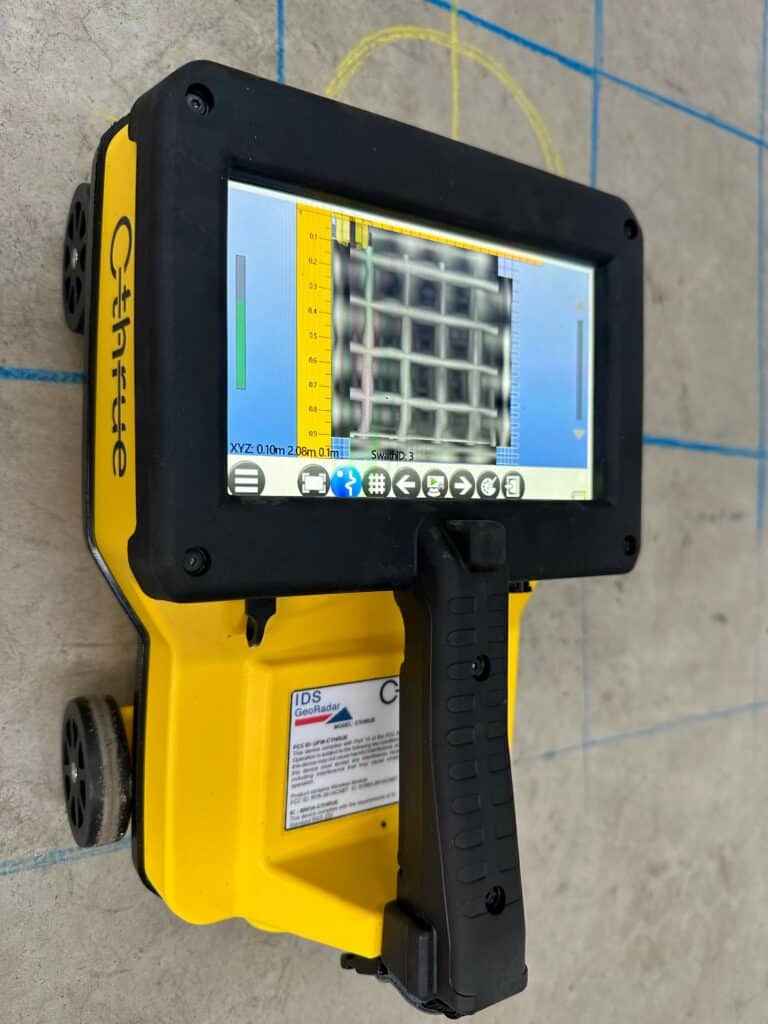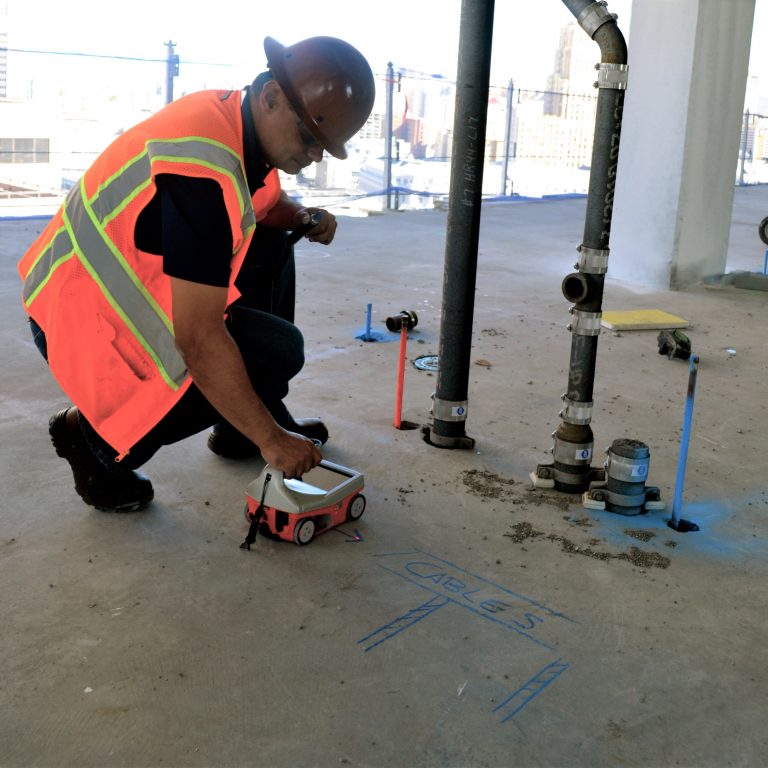In-Depth Insights into Concrete Scanning Procedures
In-Depth Insights into Concrete Scanning Procedures
Blog Article
Exploring Precision: the Role of Concrete Scanning in Enhancing Construction Safety and Efficiency
Concrete scanning, an innovation that has obtained considerable grip in the sector, plays an important role in boosting these essential facets of construction tasks. The effects of concrete scanning extend far beyond surface-level advantages, promising a deep-rooted impact on the general success of construction endeavors.
Value of Concrete Scanning Technology
Concrete scanning innovation plays a vital function in ensuring the safety and security and architectural honesty of construction projects. By using various scanning methods such as Ground Penetrating Radar (GPR) and electro-magnetic induction, construction groups can find ingrained objects, rebar, conduits, and other prospective obstructions within concrete structures prior to beginning any boring or reducing tasks. This modern technology assists avoid unintentional damages to crucial facilities, reduces the danger of architectural failures, and boosts general project effectiveness.
Moreover, concrete scanning enhances worker safety by providing precise details regarding the problem of concrete aspects, allowing groups to intend and carry out building activities with accuracy. The capability to picture subsurface functions in real-time enables job supervisors to make enlightened choices, mitigate potential threats, and adhere to project timelines efficiently. Furthermore, by identifying any kind of defects or abnormalities at an early stage, building teams can implement restorative actions promptly, staying clear of expensive rework and delays in the building procedure.
Basically, the importance of concrete scanning innovation exists in its ability to safeguard building and construction projects, enhance procedures, and support the greatest standards of security and top quality in the sector.
Enhancing Safety And Security Procedures on Site

Concrete scanning technology plays a crucial duty in boosting safety by permitting construction teams to precisely locate potential dangers such as rebar, channels, and post-tension cords installed within concrete structures. By identifying these hazards beforehand, workers can take needed precautions to prevent crashes throughout exploration, reducing, or coring activities. This positive method not only safeguards the well-being of employees but additionally helps in avoiding costly damages to the structure.
Integrating concrete scanning into security procedures shows a dedication to prioritizing safety and security on building and construction sites, inevitably resulting in much more successful and efficient job outcomes.
Optimizing Construction Job Planning
Reliable project planning is necessary for the effective execution of building tasks. Maximizing construction task preparing entails a precise method to scheduling, resource allotment, and risk monitoring. By incorporating these technologies right into the planning stage, construction teams can proactively deal with obstacles, improve control in between various professions, and make sure that jobs are finished on time and within budget.
Decreasing Job Hold-ups and Risks
To alleviate task delays and dangers, precise planning and positive danger management approaches are essential in the building and construction market. Delays in construction projects can result in substantial economic Extra resources losses, damaged online reputations, and also security hazards.
In addition to using concrete scanning modern technology, clear communication among job stakeholders is vital for identifying and dealing with possible threats at an early stage. Normal task meetings, updates on progress, and open networks for responses can help make sure that any problems are immediately handled to stop hold-ups. Having backup strategies in place for common threats in building and construction, such as adverse weather condition conditions or product scarcities, can assist minimize the impact of these aspects on job timelines. By prioritizing planning and threat monitoring, building groups can minimize project hold-ups and threats, eventually bring about much more effective and reliable results.
Improving Total Effectiveness and Efficiency
Offered the significance of meticulous planning and aggressive danger monitoring in reducing job hold-ups and dangers in building, a concentrate on boosting overall performance and performance comes to be important. Improving efficiency and productivity in building tasks involves streamlining processes, optimizing resource allowance, and minimizing downtime. Utilizing sophisticated technologies like concrete scanning can considerably contribute to attaining these objectives. By accurately drawing up subsurface utilities and frameworks before excavation or boring, possible clashes and revamp can be stayed clear of, saving time and sources. Additionally, real-time data offered by scanning technologies enables quick moved here decision-making on-site, reducing hold-ups and boosting efficiency. Improved performance also translates to better project timelines, expense savings, and boosted client complete satisfaction. Spending in devices and methods that prioritize efficiency and efficiency not only benefits individual construction projects but also contributes to the total growth and success of the building industry.

Conclusion
In final thought, concrete scanning modern technology plays a critical duty in boosting building and construction safety and performance by enhancing safety and security procedures on site, enhancing project planning, reducing hold-ups and risks, and eventually boosting general performance. This technology is important for ensuring the successful completion of building and construction projects while prioritizing the safety and security of employees and decreasing potential hazards. Its application can considerably benefit the building and construction industry official site in achieving greater degrees of accuracy and effectiveness.
Concrete scanning technology plays an important function in guaranteeing the safety and security and structural integrity of construction projects. Additionally, by recognizing any flaws or anomalies early on, building groups can execute restorative actions promptly, preventing costly rework and delays in the construction procedure.
Reliable task planning is vital for the effective execution of building and construction jobs. Investing in tools and techniques that focus on efficiency and performance not only benefits specific building and construction projects however also adds to the total growth and success of the construction sector.
In final thought, concrete scanning modern technology plays an essential role in enhancing building and construction safety and effectiveness by enhancing safety measures on website, enhancing job preparation, reducing threats and hold-ups, and eventually increasing total efficiency. - Concrete Scanning
Report this page